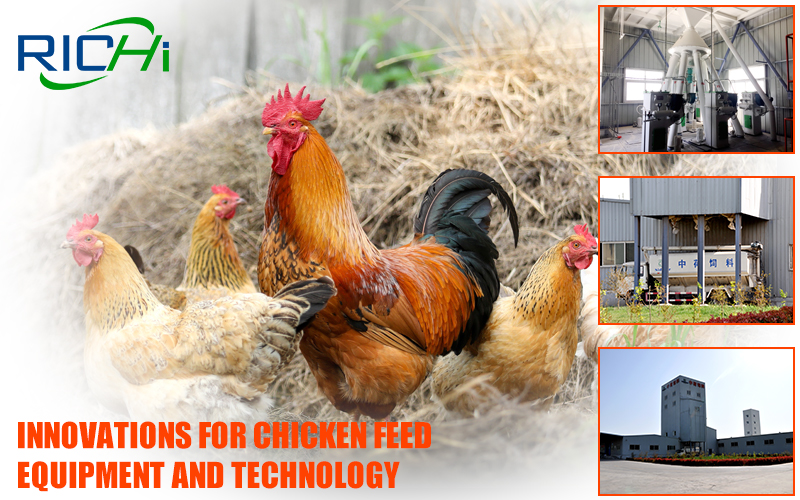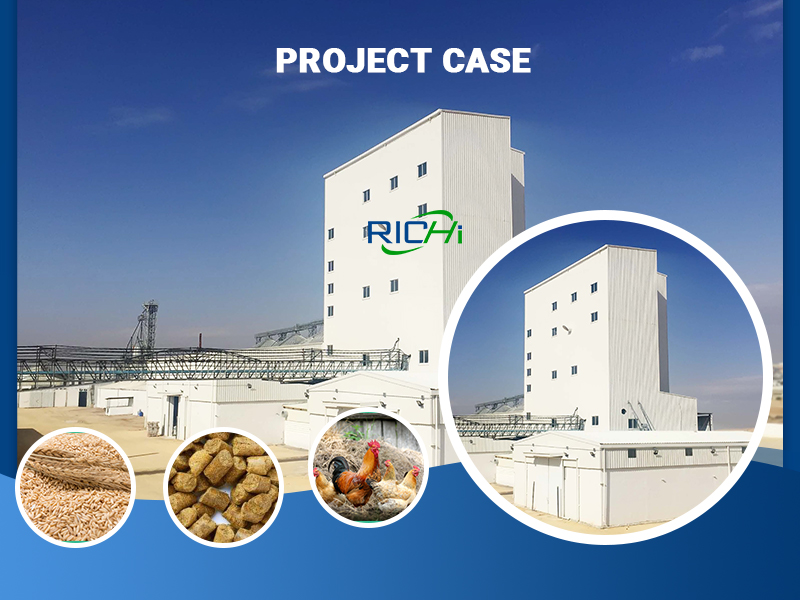How to confirm the capacity about chicken feed pellet line? What is the daily feed intake of chickens (layers and broilers)?
How to confirm the capacity about chicken feed pellet line?
To confirm the capacity of a chicken feed pellet line, several factors need to be considered. Here are the key steps and considerations to determine the appropriate capacity for your operation:
1. Assess Feed Requirements
Determine Daily Feed Intake: Calculate the daily feed intake for your flock, considering the number of chickens and their type (layers or broilers).
Calculate Total Feed Needs: Multiply the daily feed intake per bird by the total number of birds to get the total daily feed requirement.
2. Estimate Production Goals
Daily Production Goals: Decide on the amount of feed you need to produce daily to meet your flock's needs.
Future Expansion: Consider potential future expansion and increase in the number of birds to ensure the chicken feed pellet line can handle growth.
3. Evaluate Chicken Feed Pellet Line Components
Chicken Feed Pellet Mill Capacity: Check the rated capacity of the chicken feed pellet mill, which is usually specified in tons per hour (tph). Ensure it aligns with your daily feed production goals.
Auxiliary Equipment: Assess the capacity of other components in the chicken feed pellet line, such as feed mixers,feed grinders, and feed coolers, to ensure they are compatible with the chicken feed pellet mill's capacity.
4. Consider Operational Hours
Production Hours Per Day: Determine the number of hours the chicken feed pellet line will operate each day. This will affect the required capacity per hour.
For example, if you need to produce 10 tons of feed daily and the pellet line operates 8 hours a day, the required hourly capacity is 10 tons / 8 hours = 1.25 tons per hour.
5. Factor in Downtime and Maintenance
Allow for Maintenance: Account for potential downtime for maintenance and repairs when calculating the needed capacity.
Operational Efficiency: Ensure the chicken feed pellet line can handle peak production needs even with periodic maintenance breaks.
6. Consult with Manufacturers
Expert Guidance: Consult with chicken feed pellet line manufacturers or suppliers to get their recommendations based on your specific requirements.
Custom Solutions: Manufacturers can provide custom solutions tailored to your operational needs, ensuring optimal performance.
7. Perform a Trial Run
Pilot Testing: If possible, perform a trial run with the chicken feed pellet line to confirm it meets your capacity requirements in real-world conditions.
Adjustments: Make necessary adjustments based on the trial run to optimize the chicken feed pellet line's performance.

What is the daily feed intake of chickens (layers and broilers)?
Now we need to know how to calculation method of daily feed intake:
1.calculation method of daily feed intake of laying hens:
10 days before age: (day age + 2)g
10-20 days old: (day age+1)g
20-50 days old: grams of material used = day age
51-150 days age: 50+ (day age-50)/2
Breeding chickens over 150 days old: stable over 100g
Egg-laying peak: about 120g
Fed according to the above calculation method, a hen consumes 8.84kg from birth to 150 days of age, and a layer consumes 36.5kg a year, which can basically meet the needs of laying eggs.
2. Calculation method of daily feed intake of broilers
(Subject to Ross 308 broiler,it is a breed with strong physique, high survival rate, fast weight gain and high meat yield.)
1-10 days old: the first day: 6g, and then increase by 4g per day, such as: 7 days: 30g
11-20 days age: (day age -2)/10*50, such as: 15 days: 65g
21-30 days old: (day age-1)/10*50, such as: 125g in 26 days
31-40 days old: day age/10*50, such as: 35 days 175g
40-50 days old: 200g
Under normal circumstances, feed with full-price feed, each chicken will eat 4.5kg of feed until the slaughter, and the average weight can reach 2.5kg. During normal breeding, the flock should not exceed the feed intake of the day. If it exceeds, the flock is considered abnormal. In the process of feeding and management, it is necessary to appropriately limit its feed intake, otherwise the chickens will be prone to disease or difficult to control after the disease.
Select a chicken feed pellet mill with a capacity slightly above the required hourly capacity to account for downtime and ensure consistent production.
Confirming the capacity of a chicken feed pellet line involves assessing feed requirements, production goals, operational hours, and consulting with manufacturers. By carefully evaluating these factors, you can select a pellet line that meets your current needs and allows for future growth.

Confirm the capacity, the next step , we need to know how to built chicken feed pellet line?
Building a chicken feed pellet line involves several steps, from planning and design to installation and operation. Here's a comprehensive guide to help you set up a chicken feed pellet line:
1. Planning and Design
Determine Capacity: Calculate the daily feed requirement based on the number of chickens and their type (layers or broilers).
Define Production Goals: Set clear production goals and consider potential future expansion.
Space Requirements: Ensure you have adequate space for all components of the pellet line.
Workflow Optimization: Design the layout for efficient workflow, minimizing material handling and maximizing productivity.
2. Select Equipment
Feed Grinder: Crush raw materials into smaller particles.
Feed Mixer: Mix the ground materials uniformly.
Pellet Mill: Compress the mixed feed into pellets.
Cooler: Cool the hot pellets to room temperature.
Screening Machine: Separate fines and dust from the pellets.
Packing Machine: Pack the finished pellets for storage or sale.
Conveyors: Transport materials between different stages of the chicken feed pellet line.
Storage Bins: Store raw materials and finished products.
Dust Collectors: Maintain a clean and safe working environment.
Control Systems: Automate and monitor the production process.
3. Procure Materials
Raw Materials: Ensure a steady supply of quality raw materials such as grains, soybeans, vitamins, and minerals.
Building Materials: Obtain the necessary materials for constructing the facility and installing the equipment.
4. Installation
Infrastructure: Ensure the site has the necessary infrastructure, including power, water, and ventilation.
Foundation: Build a solid foundation for heavy equipment.
Position Equipment: Place equipment according to the design layout.
Connect Systems: Link the equipment with conveyors and control systems.
Electrical and Plumbing: Install electrical wiring and plumbing as required.
5. Testing and Calibration
Dry Run: Test the equipment without raw materials to check for mechanical issues.
Load Testing: Run the chicken feed pellet line with raw materials to ensure all components work correctly.
Adjust Settings: Fine-tune the settings on grinders, mixers, and the pellet mill for optimal performance.
Quality Control: Test the quality of the pellets to ensure they meet nutritional and physical standards.
6. Training and Operation
Staff Training
Operation Training: Train staff on operating the equipment and managing the feed pellet line.
Safety Training: Educate staff on safety protocols and emergency procedures.
Gradual Ramp-Up: Start production gradually, increasing output as the team gains confidence and experience.
Monitoring and Maintenance: Regularly monitor the chicken feed pellet line for performance issues and perform routine maintenance to prevent downtime.
7. Quality Control and Management
Regular Testing: Continuously test feed quality to ensure consistency.
Adjustments: Make necessary adjustments based on quality control feedback.
Production Records: Maintain detailed records of production volumes, raw material usage, and maintenance activities.
Inventory Management: Track raw material and finished product inventories.
Building a chicken feed pellet line involves careful planning, selecting the right equipment, and ensuring proper installation and operation. By following these steps, you can establish an efficient and productive feed pellet line that meets the nutritional needs of your poultry and supports your production goals.

RICHI machinery as a manufacturer of feed pellet machinery, can provide the one step turnkey service for every customers. Such as design, production , test, delivery, install and training.
Learn More Knowledge about Chicken Feed Pellet Line
poultry chicken feedstuff powder feed processing unit line
If you want to built one complete pellet production line in your country, pls send the inquiry to us. We will customized design according to your requirement.



